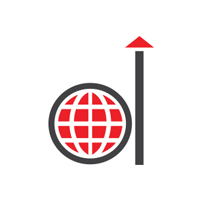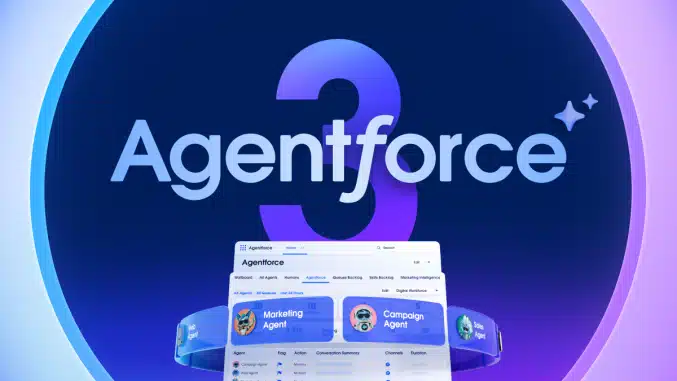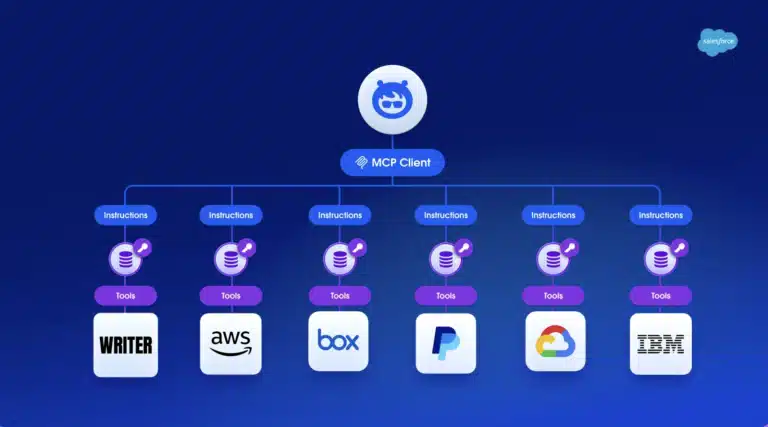The enterprise AI landscape has come a long way. While you’ve likely experimented with AI agents in your organization, most teams still lack visibility into what’s happening behind the scenes. For instance, how their agents are operating, or how to ensure they are fully governed. Teams are struggling to optimize AI agent performance and overcome integration challenges that limit their impact. This visibility gap has become the biggest blocker to scaling AI agents across the enterprise, despite the undeniable potential they bring to the table.
Salesforce’s Agentforce 3 changes that. Salesforce’s latest rendition of its digital labor platform (Agentforce), announced in June 2025, enables teams to monitor, improve, and scale their AI agents with confidence. In fact, if you’ve been watching Agentforce’s evolution since its October 2024 launch, you’ll recognize this as the moment the digital labor platform transitions from just an experimental prototype solution to a full-fledged enterprise-grade solution. Let’s see how!
Source: Salesforce
Table of Contents
What Led to the Announcement of Agentforce 3?
Agentforce 3: Feature Availability
What Led to the Announcement of Agentforce 3?
Just months after the release of Agentforce 2, Salesforce introduced Agentforce 3 at a pivotal moment. AI agent adoption is surging, and as per Salesforce, AI agent usage is up 233% in six months, with over 8,000 customers signing up to deploy Agentforce during that same period. Yet, enterprises lacked visibility into their AI agents.
In response, rather than simply adding more features, Salesforce focused on solving the core problems preventing enterprise-scale deployment. A platform upgrade that addresses visibility, control, and integration of AI agents. And it makes sense because, as a “digital labor platform,” Agentforce is expected to unify agents, data, applications, and meta data.
“Over the past several months we’ve listened deeply to our customers and continued our rapid pace of technology innovation. The result is Agentforce 3, a major leap forward for our platform that brings greater intelligence, higher performance, and more trust and accountability to every Agentforce deployment.”
— Adam Evans, EVP & GM of Salesforce AI
What’s New in Agentforce 3?
Agentforce 3 brings a fresh range of capabilities in managing AI agents along with other major enhancements that address long-standing gaps in enterprise adoption. More importantly, Salesforce continues to win customers by focusing on resolving pain points rather than dropping updates for the sake of it. Let’s take a close look at these updates one by one.
1. The All-New Agentforce Command Center
This is one of the major updates that comes with Agentforce 3. You’ll finally have a complete observability solution for optimizing your AI agents. Built inside Agentforce Studio, the Command Center makes managing AI agents much easier.
- I. Discover What’s Working and Where to Improve
Track AI agent adoption, feedback, success rates, and cost efficiency. Drill down into specific interactions/moments, understand usage trends, and identify which agents are delivering the highest ROI. Interestingly, this was previously impossible with AI implementations. - II. Monitor Agent Health in Real Time
Track the health of your AI agents built on Agentforce in real time. Get detailed analytics on latency, escalation frequency, or error rates when AI agents’ performance degrades, and take actions before users are impacted. - III. Build a Dedicated Command Center for Every Team
Enable each team to monitor and manage dedicated AI agents using direct integration of the Command Center with existing wallboards. Ensure better resource allocation and faster escalation management. For example, separate Command Center for your service team and marketing team. - IV. Capture AI Agent Activities in Existing Tools
Capture all agent activity in a native, extensible session-tracing data model built on OpenTelemetry standards inside Data Cloud. Completely eliminate the need for separate monitoring stacks. Make use of Agentforce’s strong integration with tools like Datadog, Splunk, and other monitoring platforms that you’re already using.
Now, let’s look at the other major updates that are coming with Agentforce 3.
2. Built-In Support for Model Context Protocol (MCP)
Agentforce 3 comes with native support for the Model Context Protocol (MCP). Think of MCP as the USB-C of enterprise AI agent integrations. MCP support enables your agents to connect to any MCP-compliant server without custom code development. This means faster integration with enterprise tools while maintaining the security and governance controls that your organization requires. The protocol acts as a universal translator, allowing agents to interact with diverse systems through standardized interfaces.
Unlike simple API integrations, Agentforce 3’s MCP implementation includes comprehensive governance features. You can control which agents access which tools, monitor all interactions through a unified gateway, and apply security policies consistently across your entire AI agent ecosystem. This addresses enterprise-grade governance for all the AI agents that are built on the Agentforce platform.
Additionally, Agentforce 3 offers pre-built plug-and-play MCP connections with 30 partners through AgentExchange, including AWS, Box, Cisco, Google Cloud, IBM, Notion, PayPal, Stripe, and more.
Source: Salesforce
3. The Expanding AgentExchange Ecosystem
The AgentExchange has quickly grown from a simple AI agent directory to a comprehensive ecosystem that accelerates agent deployment and reduces development overhead. The platform now offers around 200 pre-built industry actions, covering use cases from patient scheduling in healthcare to advertising proposal generation in marketing. These are purpose-built solutions that understand industry-specific requirements and compliance needs. More importantly, most of these are plug-and-play solutions. This means you can deploy these AI agents fast, generating better ROI.
Multi-Agent AI in Salesforce Transforms Enterprise Operations
4. An Enhanced Atlas Architecture
The Atlas architecture, which powers Agentforce, is being enhanced with features that directly impact agent performance and reliability. These improvements address the fundamental requirements for enterprise-grade AI deployment.
- I. AI Agent Performance Improvements
Agent response time is expected to improve by 50% with real-time response streaming, which provides immediate user feedback. This is all set to transform the user experience—from waiting for responses to engaging in fluid, natural conversations. - II. Expanded LLM Choice and Flexibility
Agentforce 3 now supports multiple large language models (LLMs), including Anthropic’s Claude Sonnet model hosted within Salesforce’s trust boundary via Amazon Bedrock. This is particularly important for industries that require specific compliance certifications. Google’s Gemini integration will follow later in 2025, providing even more flexibility in model selection. - III. Enhanced Accuracy Through Advanced Grounding
The Agentforce platform now incorporates web search capabilities and inline citations, allowing agents to access information beyond internal data sources while maintaining transparency about their information sources. This combination of breadth and transparency is essential for building user trust and ensuring accurate responses. - IV. Global Scale and Multilingual Support
Agentforce 3 will now operate across multiple regions including Canada, UK, India, and Brazil. In fact, it will provide support for six new languages, including French, Italian, and German. Over 30 additional languages are planned for release in the coming months, enabling a truly global deployment. - V. Automatic Failover and Resilience
The platform includes intelligent failover capabilities that automatically route traffic between model providers based on performance metrics. This ensures consistent service availability even during provider outages or performance degradation. - VI. Public Sector Customers Readiness
Agentforce 3 is now FedRAMP High authorized. This means that the AI agent platform is now available for deployment in the public sector. This certification process validates the platform’s security controls and compliance capabilities, providing assurance for organizations with strict regulatory requirements.
Agentforce 3: Feature Availability
While Salesforce has made the announcement of Agentforce 3, not all the features mentioned in the release notes have hit the org as of now. As has always been the case, they eventually roll out updates and features to orgs. It’s no different this time around. Here’s a breakdown of what’s available now, and what’s coming soon.
| Available Now | In Pilot or Beta | To Be Released Soon |
|---|---|---|
|
|
|
Source: Salesforce
Is Agentforce 3 Worth the Hype?
Yes. The value of Agentforce 3 cannot be overlooked. Early adopters, especially enterprises, are already taking advantage of this rollout. For example, Engine has reduced average customer case handle time by 15% through intelligent agent deployment. 1-800Accountant achieved 70% autonomous resolution of administrative chat engagements during the last peak tax season in 2025. Grupo Globo, on the other hand, increased subscriber retention by 22% through AI agent interactions that provide personalized, contextual support. These early wins signal that Agentforce 3 is a blueprint for scaling AI success across the enterprise.
“Salesforce’s open ecosystem approach, especially through its native support for open standards like MCP, will be instrumental in helping us scale our use of AI agents with full confidence. We’ll be able to securely connect agents to the enterprise systems we rely on without custom code or compromising governance. That level of interoperability has given us the flexibility to accelerate adoption while staying in complete control of how agents operate within our environment.”
— Mollie Bodensteiner, SVP-Operations, Engine
What’s Next?
Agentforce’s latest updates with focus on observability, governance, and integration address the fundamental requirements for AI agent success in an enterprise landscape. Undoubtedly, the future of work will involve humans and AI agents working together seamlessly. Agentforce 3’s Command Center provides the foundational infrastructure to manage this hybrid workforce effectively, treating AI agents as digital labor rather than automated tools. The expanded AgentExchange and MCP support create a foundation layer for ecosystem-driven innovation. Rather than building everything in-house, organizations can leverage partner solutions and industry-specific actions to accelerate deployment and reduce development costs.
As you evaluate your AI strategy for the remainder of 2025 and beyond, consider how the visibility, control, and integration capabilities of Agentforce 3 address your specific organizational challenges. How about talking with a certified Salesforce AI expert first. The early adopters are already seeing great returns on their Agentforce investments. And you might want to be next.







